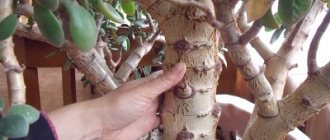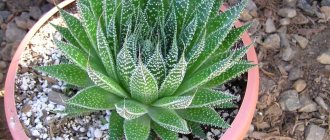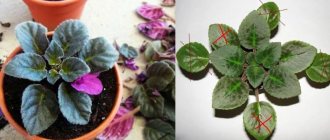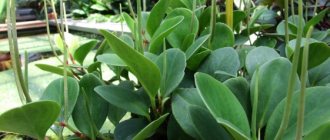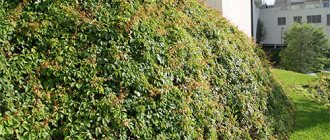In autumn, remove faded oleander flowers. Formative pruning is carried out only in early spring, when the winter dormancy period ends. The buds are set on annual shoots, only part of them is deleted. Cut off the tops of young shoots to stimulate growth. We repeat the procedure during the first 2-3 years of life. Flowering will come later, but will be abundant.
Cut off the tops of the shoots with a clean and sharp blade. Taking care of hygiene is important because contaminated instruments promote the development of difficult-to-treat fungal and viral infections. Cuttings are used to propagate oleander. It is enough to place the cuttings in a container filled with soil for seedlings, cover with perforated film and place in a shaded place.
Since oleander buds form only on annual cuttings, its appearance and the number of flowers depend on the quality of pruning. Thanks to such manipulations, young bushes branch faster, form a lush crown, which can be given the desired appearance and control the height of the plant.
Deadlines and rules of procedure
According to existing recommendations, it is better to prune oleander in the fall after flowering .
But after shortening the shoots, the plant grows green mass even faster. In autumn, young shoots become very elongated due to growth in shortened daylight hours, so the bush has to be “trimmed” again in the spring. When pruning in spring, it is also necessary to remove diseased, dry or weak branches. After this, when warm weather sets in, the oleander can be taken out into the sun. On the first day, stay in the sun for 30 minutes, on each subsequent day add another 30 minutes. After 5-7 days, the bush is no longer afraid of direct sunlight. When cutting off oleander branches, it is not recommended to remove faded inflorescences, since in the spring they can produce flowers again.
The buds also form from last year, so they are not cut off in the spring. Trimmed shoots are used to propagate the plant. Seedlings that have become stronger and rooted are also pinched to speed up the branching process.
Precautionary measures
Oleander juice contains cyanide, so it is deservedly considered poisonous . All parts of the bush from roots to leaves and flowers are poisonous. Even if the juice gets on healthy skin, painful and long-lasting burns remain. And if a leaf plate or flower petal is swallowed, severe poisoning will occur, which in some cases ends in cardiac and respiratory arrest.
There is no need to grow such a flower if there are small children and animals in the house. The plant must be handled with care.
When pruning, replanting and cutting a flower, you need to protect your hands with gloves. It is necessary to ensure that the juice does not get into the eyes and mouth, or onto scratches and wounds.
When and how to prune?
Spring pruning should be carried out at the beginning of spring (March-April) , when the dormant period ends and daylight hours increase.
Some of the buds that form on annual branches are removed, and the tops of young shoots are pinched. The procedure is repeated during the first 3 years of life, then once every 3 years, then every 5 years. Starting in April, the oleander grows rapidly, and by the end of autumn the growth of inflorescences becomes dull. Autumn pruning should be carried out at the end of autumn (November), if the climate allows you to take care of a weakened plant for a long time or postpone the work until spring.
For pinching, use a sharp and clean blade (secateurs). It is important to take care of cleanliness, because a dirty tool can infect the plant with hard-to-treat viruses and fungi. The cut should be made above the kidney, at an oblique angle.
How much should I trim?
Radical cutting of branches, especially untimely ones, entails a long and difficult recovery period. Correctly done and moderate pruning is beneficial and necessary for oleander.
With radical shortening of branches, 70% of the stem is cut off, with moderate shortening - 30%.
Rejuvenation of old plants
Anti-aging pruning can be compared to cosmetic repairs, which serve more of a decorative function. Once every 3-4 years, you need to remove old branches of the plant without leaves, which take up space and take away light. This promotes the appearance of young branches.
Every year, branches that grow inside the bush are removed and interfere with the formation of a beautiful habit. Branches, leaves and inflorescences with signs of disease are removed immediately.
Haircut after flowering
In the fall, after the flower has faded, it is cut off.
Young plants are thus given their future shape. The next time you can trim the bush when its height reaches 50 cm. It is recommended to cut each faded branch by 2/3 of its length. In adult bushes, you need to cut off all the long branches so that new shoots appear in their place, which will then become overgrown with inflorescences.
Crown formation
Crown formation is best done in the spring. It is recommended to shorten all elongated bends by ½ . If the stems are not shortened, their height will reach 2 m or more, losing the lower leaf blades and exposing themselves. Manipulations will stimulate the growth of lateral branches on which flowers will appear. Also, in early spring, the tops of vegetative branches are pinched, which stimulates young bushes to flower.
In order for a strong bush to grow that looks like a small tree, you also need to remove excess root shoots. Otherwise, the plant will grow and become shapeless.
Post-procedure care
At the beginning of spring, sap flow in the oleander is still slow; it slows down only in the fall, in preparation for wintering. Therefore, the wounds will heal quickly and will not cause negative consequences.
- Large cuts can be treated with garden varnish.
- After pruning, the soil needs to be moistened abundantly and fed with complex fertilizers for flowering plants.
- After autumn pruning, you need to prepare the bushes for winter: room temperature 8-12 ֯ C, good lighting, watering (less often than in summer) and periodic spraying of the crown.
Pruning is an important stage in plant care. A properly pruned oleander will always delight you with its bright blooms.
What temperatures can oleander withstand?
Common oleander is able to tolerate a short-term decrease in temperature from - 5 to - 10 ° C. However, in general, winter temperatures should not be below 5 °C. When the temperature rises to 10-13 C, shoots begin to appear, but the optimal temperature for growth is 15-25 ° C.
Interesting materials:
How to enable on-screen keyboard on Windows 10? How to enable electronic keyboard on Windows 7? How to enable photo thumbnails in Windows 10? How to enable the front camera on Windows 10? How to enable hyper v on Windows 10? How to enable or disable Hibernation in Windows 10? How to enable kernels on a Windows 7 laptop? How to enable processor cores on Windows 7? How to enable Game Mode in Windows 10 1803? How to enable game mode in Windows 10 on a laptop?
Why prune a plant at home?
Since oleander buds form only on annual cuttings, its appearance and the number of flowers depend on the quality of pruning. Thanks to such manipulations, young bushes branch faster, form a lush crown, which can be given the desired appearance and control the height of the plant.
Deadlines and rules of procedure
According to existing recommendations, it is better to prune oleander in the fall after flowering .
But after shortening the shoots, the plant grows green mass even faster. In autumn, young shoots become very elongated due to growth in shortened daylight hours, so the bush has to be “trimmed” again in the spring. Important ! Over time, repeated cuttings of branches in spring greatly weaken the plant.
When pruning in spring, it is also necessary to remove diseased, dry or weak branches. After this, when warm weather sets in, the oleander can be taken out into the sun. On the first day, stay in the sun for 30 minutes, on each subsequent day add another 30 minutes. After 5-7 days, the bush is no longer afraid of direct sunlight. When cutting off oleander branches, it is not recommended to remove faded inflorescences, since in the spring they can produce flowers again.
The buds also form from last year, so they are not cut off in the spring. Trimmed shoots are used to propagate the plant. Seedlings that have become stronger and rooted are also pinched to speed up the branching process.
Precautionary measures
Oleander juice contains cyanide, so it is deservedly considered poisonous . All parts of the bush from roots to leaves and flowers are poisonous. Even if the juice gets on healthy skin, painful and long-lasting burns remain. And if a leaf plate or flower petal is swallowed, severe poisoning will occur, which in some cases ends in cardiac and respiratory arrest.
There is no need to grow such a flower if there are small children and animals in the house. The plant must be handled with care.
When pruning, replanting and cutting a flower, you need to protect your hands with gloves. It is necessary to ensure that the juice does not get into the eyes and mouth, or onto scratches and wounds.
When and how to prune?
Spring pruning should be carried out at the beginning of spring (March-April) , when the dormant period ends and daylight hours increase.
Some of the buds that form on annual branches are removed, and the tops of young shoots are pinched. The procedure is repeated during the first 3 years of life, then once every 3 years, then every 5 years. Starting in April, the oleander grows rapidly, and by the end of autumn the growth of inflorescences becomes dull. Autumn pruning should be carried out at the end of autumn (November), if the climate allows you to take care of a weakened plant for a long time or postpone the work until spring.
For pinching, use a sharp and clean blade (secateurs). It is important to take care of cleanliness, because a dirty tool can infect the plant with hard-to-treat viruses and fungi. The cut should be made above the kidney, at an oblique angle.
Important ! Kitchen knives, nail scissors and other household items must not be used for work.
How much should I trim?
Radical cutting of branches, especially untimely ones, entails a long and difficult recovery period. Correctly done and moderate pruning is beneficial and necessary for oleander.
With radical shortening of branches, 70% of the stem is cut off, with moderate shortening - 30%.
Rejuvenation of old plants
Anti-aging pruning can be compared to cosmetic repairs, which serve more of a decorative function. Once every 3-4 years, you need to remove old branches of the plant without leaves, which take up space and take away light. This promotes the appearance of young branches.
Every year, branches that grow inside the bush are removed and interfere with the formation of a beautiful habit. Branches, leaves and inflorescences with signs of disease are removed immediately.
Haircut after flowering
In the fall, after the flower has faded, it is cut off.
Young plants are thus given their future shape. The next time you can trim the bush when its height reaches 50 cm. It is recommended to cut each faded branch by 2/3 of its length. In adult bushes, you need to cut off all the long branches so that new shoots appear in their place, which will then become overgrown with inflorescences.
Crown formation
Crown formation is best done in the spring. It is recommended to shorten all elongated bends by ½ . If the stems are not shortened, their height will reach 2 m or more, losing the lower leaf blades and exposing themselves. Manipulations will stimulate the growth of lateral branches on which flowers will appear. Also, in early spring, the tops of vegetative branches are pinched, which stimulates young bushes to flower.
In order for a strong bush to grow that looks like a small tree, you also need to remove excess root shoots. Otherwise, the plant will grow and become shapeless.
Important ! If the bush looks sparse with single protruding branches, pruning should be radical. The cut is made above the lower bud.
Post-procedure care
At the beginning of spring, sap flow in the oleander is still slow; it slows down only in the fall, in preparation for wintering. Therefore, the wounds will heal quickly and will not cause negative consequences.
- Large cuts can be treated with garden varnish.
- After pruning, the soil needs to be moistened abundantly and fed with complex fertilizers for flowering plants.
- After autumn pruning, you need to prepare the bushes for winter: room temperature 8-12 ֯ C, good lighting, watering (less often than in summer) and periodic spraying of the crown.
Pruning is an important stage in plant care. A properly pruned oleander will always delight you with its bright blooms.
Description and characteristics of the flower
Oleander is native to the subtropics of the Mediterranean, it is widespread in the southern regions of China, and thrives in the Crimea and Transcaucasia.
It is an evergreen shrub . Long, narrow, rich green leaves and bright, large, five-petalled flowers attract the eye and rarely leave anyone indifferent. Belongs to the Kutrov family, large inflorescences of white, pink, red and sometimes even yellow look like roses from a distance.
Under good conditions of maintenance and cultivation, it pleases with lush flowering throughout the summer .
Oleander can bloom all year round under good conditions
Pests and diseases
The plant may be affected by aphids, spider mites or scale insects . To get rid of it, the flower is treated with an insecticide or suitable folk remedies. A solution of laundry or tar soap is suitable for aphids. For spider mites, wipe the affected areas with a swab soaked in alcohol and rinse with clean water.
Oleander cancer . Growths appear on the stems that look like cauliflower. Affected branches must be removed. In severe cases, it is better to get rid of the plant.
Damage to oleander by spider mites
Types of homemade oleander with photos and names
Oleander, adapted for home use, was grown in Southern Europe. There is only one type of domestic oleander - common oleander. Its species differ in the variety of colors and the size of the inflorescences.
Pink double oleander
A compact bush no more than a meter high with elongated green leaves similar to willow leaves. Several dozen buds can be opened at the same time. Terry large flowers of white-pink hue. Very demanding on lighting and ventilation of the room. Blooms until late autumn.
Oleander white
Can grow up to 2 m. Blooms from summer to mid-autumn. Unpretentious appearance, often found in offices. The upper side of the elongated leathery leaves is dark, the lower side is lighter. The snow-white flowers are large, simple or semi-double. Has a pleasant aroma. I like the trimming.
Oleander red
The flowers are simple red, crimson or burgundy. Sometimes decorated with a small white droplet in the middle or white strokes.
Oleander yellow
The bush blooms for a long time with yellow flowers, shaped like bells. The seeds resemble chestnut seeds. From 1 seed several flowers grow at once.
Oleander, a southern guest from the Mediterranean, will decorate the interior and add a touch of romanticism to it. Caring for a plant requires patience and effort. In response to care, the oleander will open delicate flowers, give a captivating aroma and fill the home with joy.
How to fertilize a plant
Oleanders are very “voracious”, which means that they have a particularly strong need for nutrients. From March to early September, treat plants with a high-quality liquid fertilizer once or twice a week to keep them thriving. You should start doing this in the spring, immediately after taking them out into the garden, to give the plants a good start to the season.
Bob is still at the peak of fashion. Ideas for fashionable and stylish bob haircuts
The developer of CoviVac confirmed the possibility of revaccination with the drug
Just water and a shovel: how white coral, popular in decoration, is mined
It is better to refrain from fertilizing in the fall, because the plant needs enough time to stop growing and allow it to develop well-ripened and woody shoots for frost resistance. In cold wintering areas, fertilizers are not applied because the plants are inactive and do not consume any nutrients. If you apply fertilizer during hibernation, necrosis of the edges of the leaves will occur, they will become brown and dry.
Description of indoor oleander
Oleanders are such legendary plants that they are rightly ranked on a par with roses and jasmines. They even got their name in honor of the Nereids from Greek myths. True, they are much more often called pink laurel or oleander, rather than the specific name Nerium, even in the West.
Considering our harsh winters, oleander is perceived by us as a symbol of a bright vacation on the Mediterranean coast. And it remains one of the most vivid impressions of the local flora, and not a plant that you can easily grow yourself.
The frost resistance of oleanders limited their distribution area to the humid and grateful subtropics, but as an ornamental plant it has spread throughout the globe. For centuries, oleander has been, along with camellias, one of the main species for any winter garden collection. Its greenhouse status has changed greatly over the past decades: oleanders have become not only garden or greenhouse crops, but also indoor crops.
Oleanders belong to the evergreen shrubs of family . There is only one species in the plant genus - the common oleander (Nerium oleander). Sometimes, with age or when properly formed, they develop into trees.
In nature, the height of oleanders is not limited to 5 m, and as a garden plant, bushes usually do not exceed 2 m. But indoor oleanders are compact, well-formed bushes with an average height of about 50 cm and a maximum height of up to 1.5 m. The dimensions of each of a particular plant directly depend on its formation: if the oleander is allowed to grow and its shape is not controlled, it will easily go beyond its limits.
The dense crown of oleanders captivates with both the speed of growth and the ease of branching of their shoots. Erect branches with their grayish color create thick and massive crowns in combination with linear-lanceolate leaves, strongly pointed at the ends.
The leathery leaves of oleanders are striking in their hardness and density. The classic lanceolate shape, pointed edge and matte finish only emphasize how “Mediterranean” the olive-dark green color is characteristic of this shrub.
The leaf petioles are very short; a light vein stands out clearly on the leaf blades. The leaves can reach 15 cm in length with a width of only up to 3 cm. They are located either crowded opposite or in whorls. Oleanders are somewhat reminiscent of rhododendrons in foliage, and in leaf shape they are similar to laurels, willows and olive trees.
The color range of oleanders is very wide - there are white, pink, cream, orange and even red flowers. © Enid Alton
How does oleander bloom?
Long-lasting and very picturesque flowering is the main pride of this plant. Oleanders can bloom all summer. The original shape of oleander flowers - with five almost rectangular petals, offset like propeller blades - can only be fully appreciated in classic varieties with simple flowers.
Fashionable modern cultivars and hybrids flaunt round, almost interlocking, very original, oval, teardrop-shaped petals, or even surprise with their doubleness. But a dense bunch of stamens with fairly large anthers is characteristic of absolutely all oleanders. Oleander flowers are collected in dense capitate shields of inflorescences.
Simple oleander flowers with a characteristic muted shade of pink color with a calm, gentle and seemingly nostalgic tone are not so common today. But varietal oleanders with double flowers of white, light orange, cream and yellow, with various two-tone combinations and variegated colors are almost everywhere.
Today, the color scheme of this plant includes all shades of the white-yellow-pink-red spectrum. It is better to choose indoor oleanders by carefully studying the recommendations for using the variety (some plants are universal, others are garden plants, others are indoor plants, etc.) and guided by your tastes in the shades and shapes of flowers.
What does oleander smell like?
Oleanders are fragrant stars. Each variety has its own shade of aromas, which are very easily recognizable, surprising with their sweetish caramel. Some varieties of oleanders smell unobtrusively, delicately, while others smell quite strongly.
For growing indoors, it is worth checking the individual tolerance to the aroma and sensations that this plant evokes. But in any case, it is better to choose varieties with a light and subtle smell, rather than an intense one, because indoors the smell will intensify significantly, and the rich aroma of numerous flowers can cause unpleasant sensations.
Beautiful but poisonous
Despite all its beauty, one should never forget about the toxicity of oleander. This is one of the most dangerous and toxic plants, which has dangerous substances in all parts. Oleanders are strictly prohibited from being grown as an indoor crop by those who have pets and small children. When working with a plant (even just when moving them, not to mention pruning or replanting), you need to take the whole range of measures to protect the skin and mucous membranes.
Oleander can be formed into a tree. ©Plantstore
What to do with oleander after winter
These flowers can be brought out of a prolonged sleep by proper watering. Water consumption depends on temperature and amount of sunlight. Buckets containing plants are best placed in trays so nutrients can still flow through the roots from seeping irrigation water. Start watering once every three days, then gradually increase the frequency.
In summer, oleander has a very high need for water; it can remain in a saucer so that the roots always have the opportunity to drink. A common mistake made by inexperienced gardeners is watering the oleander with rainwater. What is practical and environmentally friendly, unfortunately, only harms the plant, because over time the soil in the bucket becomes acidic. Then the nutrients in the soil can no longer be absorbed and deficiency symptoms occur.
How to feed crocuses in March so that in April you will be pleasantly surprised by their flowering
A fantastic garden in Singapore, a bridge in Vietnam and other new wonders of the world
The fate of Archil Gomiashvili’s daughter and son, who also became actors
Wintering oleanders: outdoors or indoors?
When more severe frosts are declared, the oleander needs to be taken from the street into the house for the winter. A bright, unheated room, cellar, cold winter garden or garage is suitable for this. Good ventilation is important so that pests and plant diseases do not have a chance. It's best to check your bushes once a week, water if necessary, and keep an eye out for pests so you can respond quickly if they become infested.
During hibernation, the plant cannot be completely deprived of moisture. Water your oleander at least once every two weeks. Yellow leaves may be a sign that the flower is not watered enough or does not receive the right amount of fertilizer. In early spring, the oleander can be returned to the garden again. The ideal time to do this is during the rainy phase, because this will also remove the dust from the leaves that has accumulated on them during the months of dormancy.
There are two types of overwintering. Plants that have overwintered in the cold, at +10 ° C and below, can be taken outside again in early to mid-April. They retain the winter hardiness they acquired in the fall, and light night frosts, which may still occur in the spring, do not bother them much. However, an oleander that has overwintered in a warmer room begins to grow ahead of time. Fresh shoots are very sensitive to frost, and it is best to take the plant outside no earlier than mid-May.
“Coronavirus” benefits that will be canceled in the Russian Federation on April 1 have been named
They have money and power: types of men prone to cheating in relationships
Big mistake of believers: what people often do wrong on Parents' Day
Conditions for growing and caring for oleander
The shrub, which naturally grows in well-lit and ventilated areas, requires the same treatment at home. If the pot of oleander is in the shade:
- the leaves inevitably fade;
- the newly growing foliage becomes smaller;
- inflorescences become sparse and less decorative than usual;
- internodes on new shoots are stretched;
- young shoots look noticeably weakened.
A long stay in the shade threatens the loss of buds and the plant’s failure to bloom. In the summer, indoor oleander, as in the photo, can be taken out into the garden. At an air temperature of 20–25 °C, the shrub acclimatizes well and actively develops in the open air. It is not recommended to plant oleander in the ground to avoid difficulties in replanting the plant due to the formation of new roots. But burying a container near a garden pond is useful. Moisture helps the bush withstand the midday sun even on the hottest summer days. If there is no pond on the site, you can put a regular bucket of water nearby. Indoors, place the pot in a tray with damp moss or expanded clay.
Oleander reacts very sensitively to stagnant air, so it is important to ventilate the room frequently, avoiding cold gusts of wind or drafts from entering the plant.
When growing oleander at home, care includes spraying the crown with warm, soft water. This measure helps maintain clean foliage and increase air humidity near the bush.
Oleander propagation
Oleander is propagated by cuttings and air layering. The seed method of propagation is not so popular, since it is more energy-consuming; young crops require a lot of attention, special temperature and light conditions.
An easier way is cuttings. For this propagation method, cuttings measuring 10-15 cm obtained during pruning are suitable. Cuttings root successfully both in water and soil. In water, oleander usually takes root faster by a month. In order to prevent rotting, crushed activated carbon is added to the water. If you choose rooting in the soil, the cuttings must be dried and treated with activated or charcoal before planting. Plant the cuttings in perlite, a mixture of sand and charcoal. A greenhouse is made of cling film or a bag over the cuttings. For rooting, the optimal temperature is 18 - 20°C; good lighting is very important.

